James T. Lane is no stranger to Broadway. The Black gay performer has starred in A Chorus Line; Kiss Me, Kate; The Scottsboro Boys; and most recently, Chicago, where he portrayed Billy Flynn opposite Jinkx Monsoon in her history-making run as Matron Mama Morton.
But now, Lane is staging his own story in Triple Threat, which charts his rise from the South Philadelphia projects to the role of preeminent entertainer — conquering addiction and homelessness along the way. It’s also a one-man show, in which he portrays 20 different characters from his life’s journey. In this interview, Lane talks the highs and lows of creating Triple Threat, which runs through July 30 at Theatre Row. Learn more at bfany.org.
You just finished your run in Chicago, which included Jinkx Monsoon as the first drag performer to play Mama Morton and yourself as an African American Billy Flynn. What was it like to help make casting history in such a pillar production of Broadway?
It was incredible! Talk about perfect casting, and to find out that Jinkx’s dream was to be in the show made it that much more special. Their performance style, presence onstage, megawatt talent, and heart of gold is world-class. That Matron Mama Morton character in the show is Jinkx Monsoon. Jinkx made history because they were supposed to be there. I have a friend that refers to moments like this as “#destined.” This was the case. Their talent is so undeniable, Chicago the Musical was inevitable. It was a perfect fit. You could feel the buzz when Jinkx was announced. At the time, I was across the country touring on the road as Paul Williams in Ain’t Too Proud, and I could feel the excitement from there. I couldn’t wait to share the stage with Jinkx. What a moment. What a life.

Can you share a story of working with Jinkx — perhaps a lesson you learned from her?
Billy Flynn talks a mile a minute. There’s a lot of information that has to be shared, and Billy’s character carries a lot of that responsibility. Jinkx would take their time with all their lines. It was a great reminder to relax and do the same when appropriate. Here I am having the time of my life. Why am I rushing? Why was I in such the hurry? It helped me to remember to “take yo’ damn time, baby, and enjoy this language and relish in this leading role on the Broadway stage, James T. Lane. A leading man role does not regularly show up like this in the skin you travel in. It was given for reasons beyond you.”
What inspired you to create and star in your own autobiographical play, Triple Threat?
I’ve been creating content since about the age of 7. I used to bribe friends with lollipops to act in my plays at Weccacoe Playground in South Philly. My stage was on the largest space possible, the basketball courts. During my senior year of high school, they didn’t do a play, so I wrote, directed, choreographed, and co-produced my own. I held after-school theater classes in the fall, wrote during winter break, and directed it in the spring. I wasn’t playin’! I’ve always had the absolute bone-deep need to create. It’s an interesting feeling getting to New York City. Success is about getting into a Broadway show. And all the roles I’ve ever played were somebody else’s creation. They were beautiful, lovely, and coveted. But the work was theirs. Those stories were their dreams, and while I was grateful to be a part of that, my own creativity was playing second fiddle. After a number of years, I was feeling the rumblings of a tortured artist. I made the decision to go for greater “creative responsibility.” So I took the leap. It started with saying no to things that no longer fit in with what I had in mind for myself. It led me back to that kid who wrote his own things. That and with a lot of encouragement from folks I respect and love, Triple Threat is here. It feels like a dream, but I know it’s real because my feet hurt!
It’s incredible that you play 20 different parts. As an actor, how do you prepare for a challenge like that?
You’ve got to have a key. A key that opens the door to each character. Once you know what the key is, you live in that room. The blood of the play is movement. So when two of the characters I’m playing, are working onstage together, I call those tangos. Sometimes it’s appropriate for the characters to be in the same room. But other times, I have to remind myself, “James, shut the door behind you!” The clearer and more varied the keys are leads to greater items for me to play with in the room. And the better I know the room, the more relaxed I am, and on and so forth. I have no idea if that makes sense to anyone but me. But it’s what I do.
What was the hardest role to portray?
It’s all hard. But not hard in the way you might think. Of course, there’s just the sheer amount of emotional and physical strength it takes to do a one-person show five nights a week. I mean, the sweat alone is otherworldly. It’s very hard on the mind and heart. This is also my personal story, so I am going back to places that I’ve already walked through. There’s a reason you don’t revisit the haunted house. So part of the work I’m doing personally is to ensure my own mental safety and well-being are healthy for the run of the play. Consistent application of the tools I have is key. I have a whole village taking good care of me. And I actively choose to receive that care each and every day. It’s also difficult because there are a few folks that I play and/or talk about that are no longer here or do not have a voice by which they can tell their own stories. It’s important to me to shine a light on those folks who are voiceless and to share their essence. These are people who still have the willingness to strive despite their demons. Those who live on the corner and who call dark spaces home, they need love and hugs too. Triple Threat is meant to be a great big hug to a lot of folks that don’t get hugs and affection.
The play deals with some difficult personal history: your early years growing up in the South Philly housing projects as well as your addiction to drugs and alcohol. Why did you want to share these stories with the world?
These stories are universal. Either you or someone you know is dealing with addiction. It’s real, it’s here, and it needs light and love too. It’s also my story. A lot of people look at me and think because I’ve done Broadway, and they see this smile of mine, they assume everything was handed to me, or maybe I’m just this talented guy who had things fall right into my lap. That wasn’t the case at all. And the play shatters that illusion a bit. From a lot of shards, I’ve put together a life that I’m very proud of and grateful for. I want folks to see that other side of me.

What saved you?
The easiest and most all-encompassing way to answer this is to say that love saved me. I chose to love myself. There was a time in my life when things were so dark that I couldn’t even hum a song in tune. I was so out of it. For me not to be an artist was to die. I had to get back to that. So I learned to love myself. I also had a partner at the time who loved me and kept me safe. My mother and brother never threw me out. That’s love. Love saved my ass. And when you love yourself, it grows on and out from there. It all becomes possible again.
If you could talk to your younger self in your darkest hour, what would you say?
“If no one has told you yet today, let me be the first to say, I love you.” Even when the world felt dark, I would tell myself in those dark spaces, “I love you,” each and every day.
How did theater help you in your life?
Theater is a sacred space for me — hallowed ground. I was influenced by Michael Jackson in The Wiz, Gregg Burge in the film A Chorus Line, Dick Van Dyke, and Hinton Battle, and the entire cast of Sophisticated Ladies. Most of these folks were my color, and that was very important to me, to see people who were dark like me and literally changing the molecules in the space they inhabited. I had to do that. I had to find out how to do that. I’m very much on that journey. Changing molecules in places and shit. I’m on that shiftin’ paradigm shit! Ha!
Why did you first want to become an actor?
You know, in my heart of hearts, I feel I was born to be an artist. It came first through dance. That was my first language. But I also saw it as a way out of poverty — maybe I could buy my mama a house. She ended up buying her own. But I want to buy the next one! The projects were no joke. Running downstairs because the elevator was always broken. I knew that if I was good enough, it could change my life. I wanted that.
Do you feel like there’s been a shift on Broadway since lockdown, the BLM movement, and renewed right-wing political threats against drag performers, trans people, and the larger LGBTQ+ community?
Personally, I think people fear what they don’t know. And there’s a concerted effort to hold on to power by stoking fear to separate people. Power grows when it comes together, and love is activated. So the conservative folks who’ve made laws and stacked the courts and cheated and lied are the purveyors of fear. They’ve sown divides and are attempting to lessen our communities’ powers. For me, the BLM movement made me want to tell my story even more. So many of the LGBTQ+ and BIPOC stories had been told by people who haven’t lived them. BLM gave me more courage to strike out and speak authentically — to tell the whole story.
What’s your highest hope for Triple Threat?
I think it’s impossible to see what God has planned for Triple Threat. If I gave you my highest hope, I would perhaps be hindering what is in store for this show. I do not ever try to stand in the way of God’s blessing on my life, so I can’t really answer that. However, each morning, after I do my morning pages and meditation and a few other things to get ready for the day, I take a separate trip through a 15-minute meditation exclusively for Triple Threat. And what I see, well, no words can really describe. So we all will just have to wait and see. I am just truly grateful to be given the space, time, and opportunity to share my story on the stage and with you.
This article is part of the Out July/August issue, out on newsstands July 4. Support queer media and subscribe -- or download the issue through Amazon, Kindle, Nook, or Apple News.

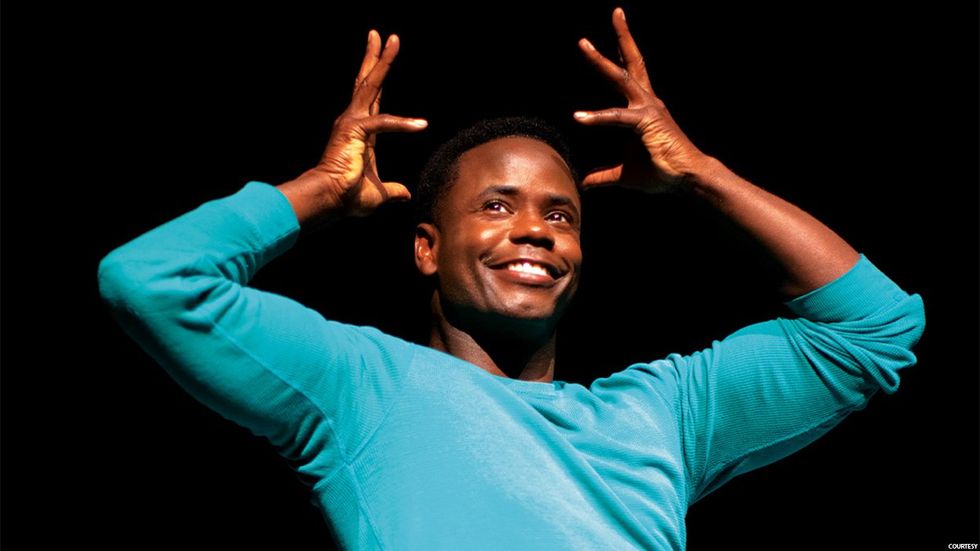









































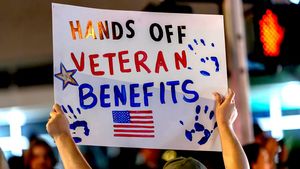


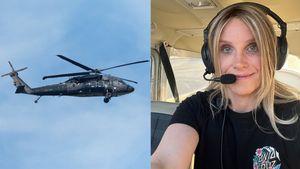






















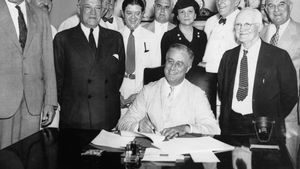







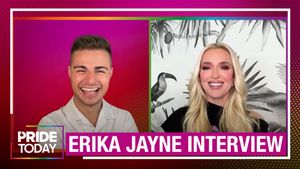


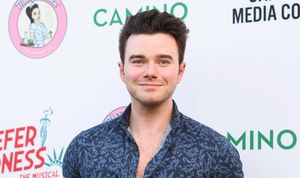








Cooper Koch and twin bro spark controversy with eye-popping 'White Lotus' parody